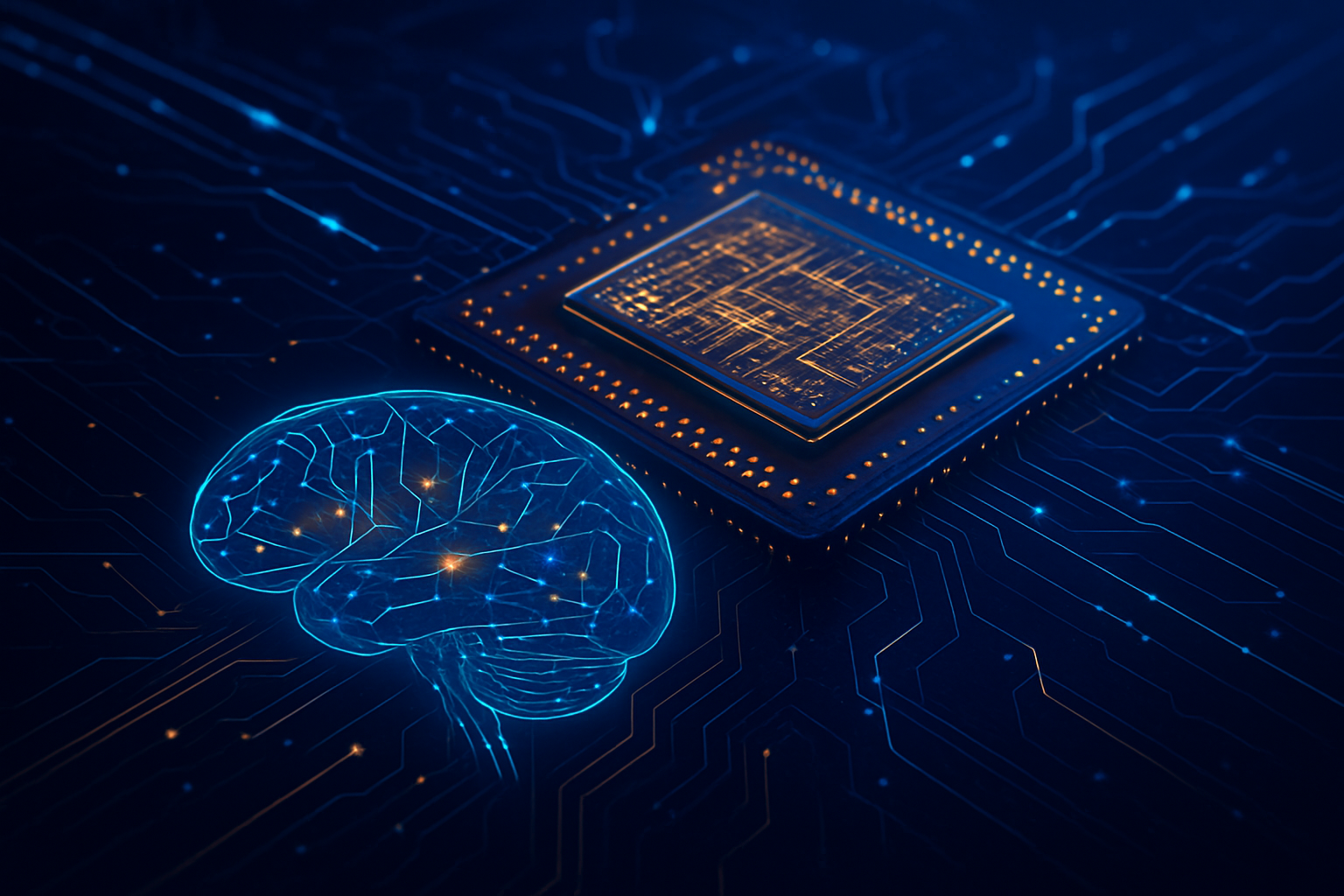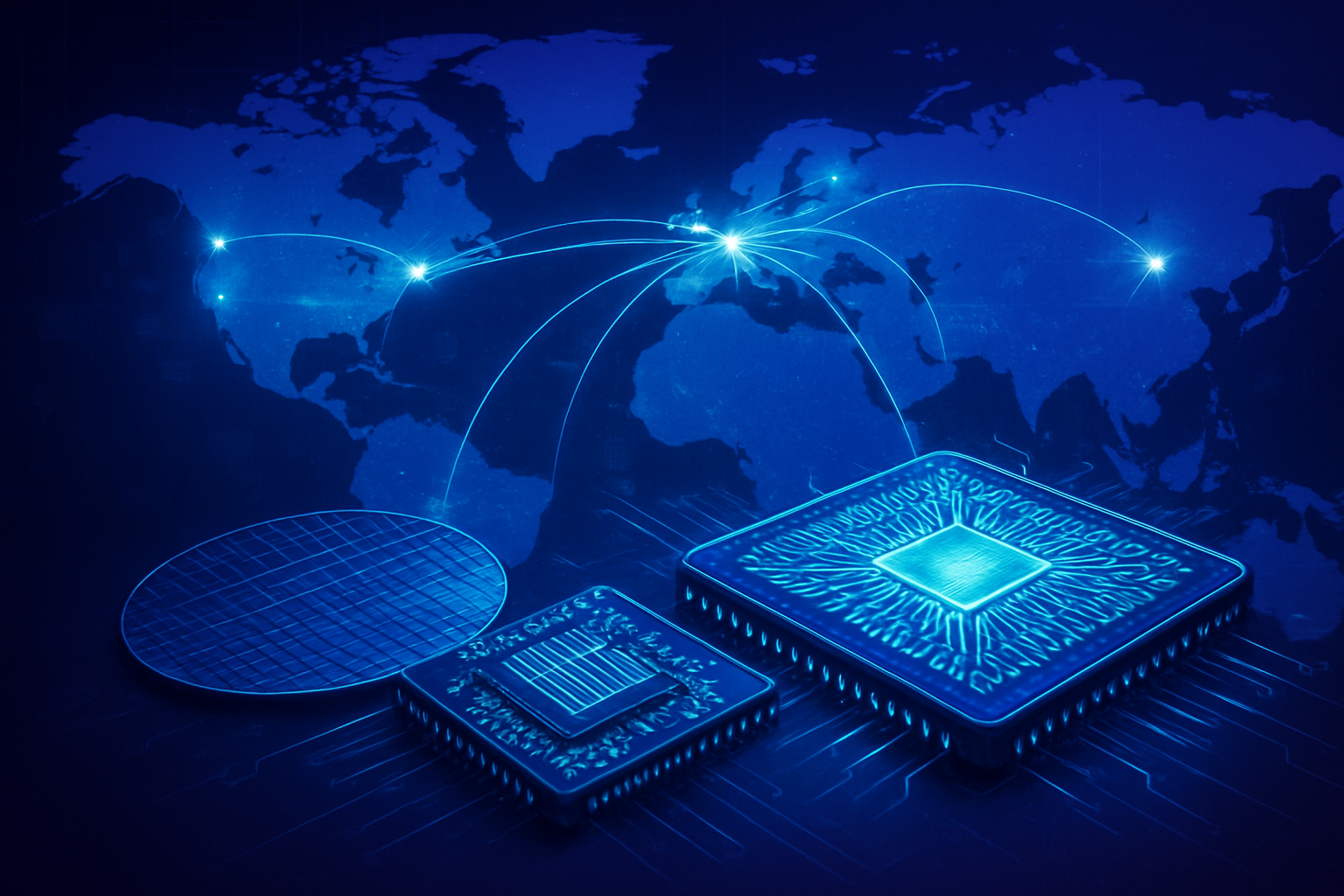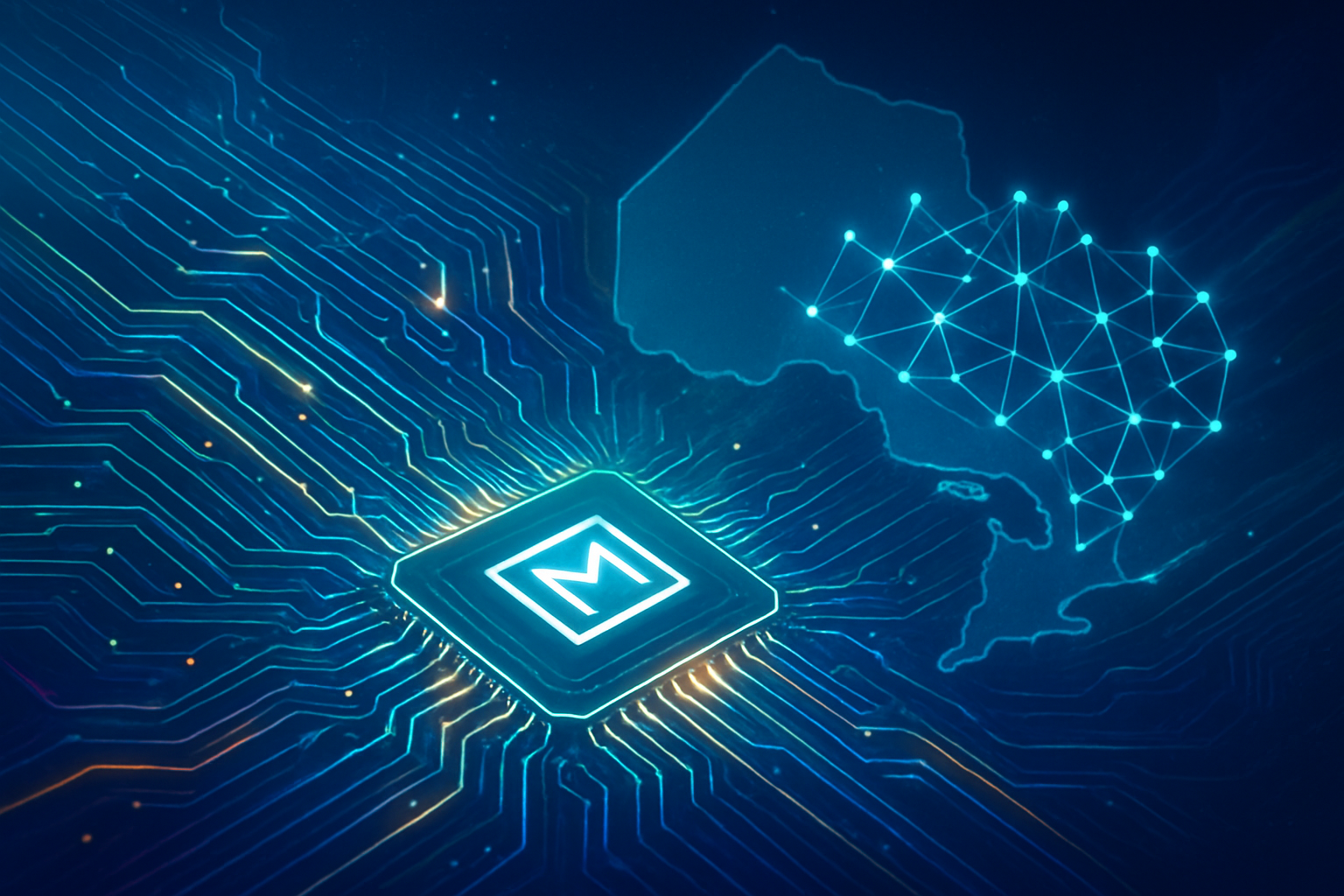The ambitious quest for practical quantum computing is entering a new, critical phase, one where the microscopic battleground of semiconductor technology is proving decisive. Recent breakthroughs in quantum computing, marked by enhanced qubit stability, scalability, and error correction, are increasingly underpinned by highly specialized semiconductor innovations. Technologies such as cryo-CMOS and advanced superconducting circuits are not merely supplementary; they are the immediate and indispensable enablers addressing the fundamental physical and engineering challenges that currently limit the development of large-scale, fault-tolerant quantum computers. As the industry pushes beyond experimental curiosities towards viable quantum machines, the intricate dance between quantum physics and advanced chip manufacturing is defining the very pace of progress.
These specialized semiconductor advancements are directly confronting the inherent fragility of qubits and the extreme operating conditions required for quantum systems. Superconducting circuits form the very heart of many leading quantum processors, demanding materials with zero electrical resistance at ultra-low temperatures to maintain qubit coherence. Simultaneously, cryo-CMOS technology is emerging as a critical solution to the "wiring bottleneck," integrating classical control electronics directly into the cryogenic environment, thereby dramatically reducing heat dissipation and enabling the scaling of qubit counts from dozens to potentially millions. Without these tailored semiconductor solutions, the vision of a powerful, error-corrected quantum computer would remain largely theoretical, highlighting their profound and immediate significance in the quantum computing landscape.
The Microscopic Engine: Cryo-CMOS and Superconducting Circuits Drive Quantum Evolution
The core of modern quantum computing's technical advancement lies deeply embedded in two specialized semiconductor domains: superconducting circuits and cryogenic Complementary Metal-Oxide-Semiconductor (cryo-CMOS) technology. These innovations are not just incremental improvements; they represent a fundamental shift in how quantum systems are designed, controlled, and scaled, directly addressing the unique challenges posed by the quantum realm.
Superconducting circuits form the backbone of many leading quantum computing platforms, notably those developed by industry giants like International Business Machines (NYSE: IBM) and Alphabet (NASDAQ: GOOGL) (Google). These circuits are fabricated from superconducting materials such as aluminum and niobium, which, when cooled to extreme temperatures—mere millikelvin above absolute zero—exhibit zero electrical resistance. This allows electrons to flow without energy loss, drastically minimizing thermal noise and preserving the delicate quantum states of qubits. Utilizing capacitors and Josephson junctions (two superconductors separated by an insulating layer), these circuits create artificial atoms that function as qubits. Their compatibility with existing microfabrication techniques, similar to those used for classical chips, combined with their ability to execute rapid gate operations in nanoseconds, positions them as a highly scalable and preferred choice for quantum processors. However, their vulnerability to environmental noise and surface defects remains a significant hurdle, with ongoing research focused on enhancing fabrication precision and material quality to extend coherence times and reduce error rates.
Complementing superconducting qubits, cryo-CMOS technology is tackling one of quantum computing's most persistent engineering challenges: the "wiring bottleneck." Traditionally, quantum processors operate at millikelvin temperatures, while their control electronics reside at room temperature, necessitating a vast number of cables extending into the cryogenic environment. As qubit counts escalate, this cabling becomes impractical, generating excessive heat and occupying valuable space. Cryo-CMOS circuits circumvent this by designing conventional CMOS circuits specifically optimized to function efficiently at ultra-low cryogenic temperatures (e.g., 1 Kelvin or lower). At these frigid temperatures, cryo-CMOS circuits can consume as little as 0.1% of the power of their room-temperature counterparts, drastically reducing the thermal load on dilution refrigerators and preventing heat from disturbing fragile quantum states. This co-location of control electronics with qubits leverages the immense manufacturing scale and integration capabilities of the traditional semiconductor industry, making systems more efficient, less cumbersome, and ultimately more scalable for achieving fault-tolerant quantum computing. This approach represents a significant departure from previous architectures, which struggled with the interface between cold qubits and hot classical controls, offering a pathway to integrate thousands, or even millions, of qubits into a functional system.
Initial reactions from the AI research community and industry experts underscore the critical importance of these advancements. Researchers praise the progress in extending qubit coherence times through improved materials like tantalum, which boasts fewer imperfections. The ability to demonstrate "below-threshold" error correction with processors like Google's Willow, effectively halving error rates with increased encoded qubits, is seen as a pivotal step towards fault tolerance, even if the thousands of physical qubits required for a single logical qubit remain a challenge. The integration of cryo-CMOS is widely recognized as a game-changer for scalability, promising to unlock the potential for truly large-scale quantum systems that were previously unimaginable due to thermal and wiring constraints. The consensus is clear: without continuous innovation in these specialized semiconductor technologies, the path to practical quantum computing would be significantly longer and more arduous.
Quantum's Corporate Race: Redrawing the Tech Landscape
The accelerating advancements in specialized semiconductor technologies for quantum computing are profoundly reshaping the competitive landscape for AI companies, tech giants, and startups alike. This technological pivot is not merely an upgrade but a fundamental re-evaluation of strategic advantages, market positioning, and the very structure of future computational services.
Leading the charge are established tech giants with deep pockets and extensive research capabilities, such as International Business Machines (NYSE: IBM) and Alphabet (NASDAQ: GOOGL) (Google). IBM, a pioneer in superconducting quantum processors, stands to significantly benefit from continued improvements in superconducting circuit fabrication and integration. Their focus on increasing qubit counts, as seen with processors like Condor, directly leverages these material and design innovations. Google, with its groundbreaking work in quantum supremacy and error correction on superconducting platforms, similarly capitalizes on these advancements to push the boundaries of fault-tolerant quantum computing. These companies possess the resources to invest heavily in the highly specialized R&D required for cryo-CMOS and advanced superconducting materials, giving them a distinct competitive edge in the race to build scalable quantum hardware.
However, this specialized domain also opens significant opportunities for semiconductor manufacturers and innovative startups. Companies like Intel (NASDAQ: INTC), with its long history in chip manufacturing, are actively exploring cryo-CMOS solutions to control silicon-based qubits, recognizing the necessity of operating control electronics at cryogenic temperatures. Startups such as SemiQon, which is developing and delivering cryo-optimized CMOS transistors, are carving out niche markets by providing essential components that bridge the gap between classical control and quantum processing. These specialized firms stand to benefit immensely by becoming crucial suppliers in the nascent quantum ecosystem, offering foundational technologies that even the largest tech companies may choose to source externally. The competitive implications are clear: companies that can master the art of designing and manufacturing these extreme-environment semiconductors will hold a powerful strategic advantage, potentially disrupting existing hardware paradigms and creating entirely new product categories for quantum system integration.
The market positioning is shifting from general-purpose quantum computing hardware to highly specialized, integrated solutions. Companies that can seamlessly integrate cryo-CMOS control electronics with superconducting or silicon-based qubits will be better positioned to offer complete, scalable quantum computing systems. This could lead to a consolidation of expertise, where partnerships between quantum hardware developers and specialized semiconductor firms become increasingly vital. For instance, the integration of quantum co-processors with classical AI superchips, facilitated by low-latency interconnections, highlights a potential disruption to existing high-performance computing services. Traditional cloud providers and data centers that fail to adapt and incorporate these hybrid quantum-classical architectures might find their offerings becoming less competitive for specific, computationally intensive tasks.
Beyond the Horizon: The Broader Significance of Quantum Semiconductor Leaps
The breakthroughs in specialized semiconductor technologies for quantum computing represent more than just technical milestones; they are pivotal developments that resonate across the broader AI landscape, signaling a profound shift in computational capabilities and strategic global competition. These advancements are not merely fitting into existing trends but are actively shaping new ones, with far-reaching implications for industry, society, and national security.
In the broader AI landscape, these semiconductor innovations are critical enablers for the next generation of intelligent systems. While current AI relies heavily on classical computing, the integration of quantum co-processors, facilitated by efficient cryo-CMOS and superconducting circuits, promises to unlock unprecedented computational power for complex AI tasks. This includes accelerating machine learning algorithms, optimizing neural networks, and tackling problems intractable for even the most powerful supercomputers. The ability to simulate molecular structures for drug discovery, develop new materials, or solve complex optimization problems for logistics and finance will be exponentially enhanced. This places quantum computing, driven by semiconductor innovation, as a foundational technology for future AI breakthroughs, moving it from a theoretical possibility to a tangible, albeit nascent, computational resource.
However, this rapid advancement also brings potential concerns. The immense power of quantum computers, particularly their potential to break current encryption standards (e.g., Shor's algorithm), raises significant cybersecurity implications. While post-quantum cryptography is under development, the timeline for its widespread adoption versus the timeline for scalable quantum computers remains a critical race. Furthermore, the high barriers to entry—requiring immense capital investment, specialized talent, and access to advanced fabrication facilities—could exacerbate the technological divide between nations and corporations. This creates a risk of a "quantum gap," where only a few entities possess the capability to leverage this transformative technology, potentially leading to new forms of economic and geopolitical power imbalances.
Comparing these advancements to previous AI milestones, such as the development of deep learning or the advent of large language models, reveals a distinct difference. While those milestones were primarily algorithmic and software-driven, the current quantum computing progress is deeply rooted in fundamental hardware engineering. This hardware-centric breakthrough is arguably more foundational, akin to the invention of the transistor that enabled classical computing. It's a testament to humanity's ability to manipulate matter at the quantum level, pushing the boundaries of physics and engineering simultaneously. The ability to reliably control and scale qubits through specialized semiconductors is a critical precursor to any truly impactful quantum software development, making these hardware innovations perhaps the most significant step yet in the journey toward a quantum-powered future.
The Quantum Horizon: Anticipating Future Developments and Applications
The current trajectory of advancements in quantum computing's semiconductor requirements points towards a future teeming with transformative possibilities, yet also demanding continued innovation to overcome formidable challenges. Experts predict a dynamic landscape where near-term progress lays the groundwork for long-term, paradigm-shifting applications.
In the near term, we can expect to see continued refinement and integration of cryo-CMOS and superconducting circuits. This will involve increasing the density of control electronics within the cryogenic environment, further reducing power consumption, and improving the signal-to-noise ratio for qubit readout and control. The focus will be on scaling up qubit counts from hundreds to thousands, not just physically, but with improved coherence and error rates. Collaborative efforts between quantum hardware developers and semiconductor foundries will intensify, leading to specialized fabrication processes and design kits tailored for quantum applications. We will also likely see the emergence of more robust hybrid quantum-classical architectures, with tighter integration and lower latency between quantum processors and their classical counterparts, enabling more sophisticated quantum algorithms to run on existing, albeit limited, quantum hardware.
Looking further ahead, the long-term developments hinge on achieving fault-tolerant quantum computing—the ability to perform computations reliably despite inherent qubit errors. This will require not just thousands, but potentially millions, of physical qubits to encode stable logical qubits, a feat unimaginable without advanced semiconductor integration. Potential applications on the horizon are vast and profound. In healthcare, quantum computers could revolutionize drug discovery by accurately simulating molecular interactions, leading to personalized medicine and novel therapies. For materials science, they could design new materials with unprecedented properties, from superconductors at room temperature to highly efficient catalysts. Financial modeling could see a revolution in risk assessment and portfolio optimization, while artificial intelligence could witness breakthroughs in complex pattern recognition and optimization problems currently beyond classical reach.
However, several challenges need to be addressed before these visions become reality. Miniaturization and increased qubit density without compromising coherence remain paramount. The development of robust error correction codes that are hardware-efficient and scalable is crucial. Furthermore, the overall cost of building and maintaining these ultra-cold, highly sensitive systems needs to decrease significantly to enable wider adoption. Experts predict that while universal fault-tolerant quantum computers are still decades away, "noisy intermediate-scale quantum" (NISQ) devices will continue to find practical applications in specialized domains, particularly those involving optimization and simulation, within the next five to ten years. The continued symbiotic evolution of quantum algorithms and specialized semiconductor hardware will be key to unlocking the next generation of computational power.
Quantum's Foundation: A New Era of Computational Engineering
The advancements in specialized semiconductor technologies, particularly cryo-CMOS and superconducting circuits, mark a monumental turning point in the journey toward practical quantum computing. This development is not merely an incremental step; it represents a foundational shift in how we approach the engineering challenges of harnessing quantum mechanics for computation. The ability to precisely control and scale qubits in extreme cryogenic environments, while simultaneously integrating classical control electronics directly into these frigid realms, is a testament to human ingenuity and a critical prerequisite for unlocking quantum's full potential.
The key takeaway from these developments is the indispensable role of advanced materials science and semiconductor manufacturing in shaping the future of computing. Without the relentless innovation in fabricating superconducting qubits with improved coherence and designing cryo-CMOS circuits that can operate efficiently at millikelvin temperatures, the vision of fault-tolerant quantum computers would remain largely theoretical. This intricate interplay between physics, materials engineering, and chip design underscores the interdisciplinary nature of quantum progress. It signifies that the path to quantum supremacy is not solely paved by algorithmic breakthroughs but equally, if not more, by the mastery of the physical hardware itself.
Assessing this development's significance in AI history, it stands as a critical enabler for the next generation of intelligent systems. While current AI thrives on classical architectures, the integration of scalable quantum co-processors, made possible by these semiconductor advancements, will usher in an era where problems currently intractable for AI can be tackled. This could lead to breakthroughs in areas like drug discovery, material science, and complex optimization that will redefine the boundaries of what AI can achieve. The long-term impact is nothing short of a paradigm shift in computational power, fundamentally altering industries and potentially solving some of humanity's most pressing challenges.
In the coming weeks and months, what to watch for will be continued announcements regarding increased qubit counts in experimental processors, further improvements in qubit coherence times, and demonstrations of more sophisticated error correction techniques. Pay close attention to partnerships between major tech companies and specialized semiconductor firms, as these collaborations will be crucial for accelerating the development and commercialization of quantum hardware. The race for quantum advantage is intensifying, and the advancements in specialized semiconductors are undeniably at its core, propelling us closer to a future where quantum computing is not just a scientific marvel, but a powerful, practical tool.
This content is intended for informational purposes only and represents analysis of current AI developments.
TokenRing AI delivers enterprise-grade solutions for multi-agent AI workflow orchestration, AI-powered development tools, and seamless remote collaboration platforms.
For more information, visit https://www.tokenring.ai/.









